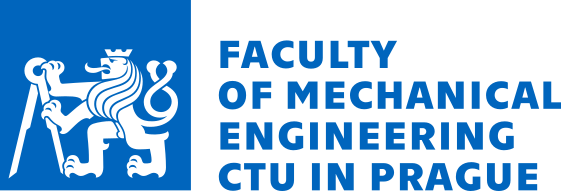User: unknown || Login || NEWS: Evaluation, Last changes, We are full, Schedule on-line, Prof. Socie as lecturer
WCFA'16-VFA
Programme of the Workshop
The course is built in such a way, that no prior knowledge on fatigue analysis is needed. The basic principles of the common fatigue damage estimation are described in the first day, while the content related to fatigue analysis under random loading is extensively discussed in next two days. In order to better suit the needs of participants and to fit it adequately to the level of their knowledge, three variants of the course are provided - Complete Course (for all three days), or Vibration Fatigue (for the second and third days only) and Introduction to Fatigue (for the first day only).
Day #1 - November 8, 2016 - Tuesday - Complete Course variant, Introduction to Fatigue variant
| 8:45-9:00 | Jan Papuga | Welcome |
| 9:00-9:45 | Milan Růžička | History of fatigue and fatigue estimation methods Materials considerations Loading considerations |
| 9:45-10:30 | Jan Papuga | Stress-Life Based Fatigue, fatigue limit, factors influencing the S-N curve |
| 10:30-11:00 | Coffee break | |
| 11:00-12:15 | Darrell Socie | Strain-Life Based Fatigue (cyclic plasticity, Neuber correction) Processing of Load Records (rainflow, damage accummulation) |
| 12:15-12:45 | Milan Růžička | Composite Materials |
| 12:45-14:15 | Lunch | |
| 14:15-14:45 | Darrell Socie | Failure probability and its influence Factors Affecting Fatigue Life (various other issues that can be encountered) An example of the workflow |
| 14:45-15:45 | Josef Jurenka | Fracture Mechanics and Crack Propagation (Brief Treatment Only) An Introduction to Weld Analysis |
| 15:45-16:15 | Coffee break | |
| 16:15-17:45 | Jan Papuga | Multiaxial Fatigue The Concept of FE Based Fatigue Analysis Available Software Applications Available Data Sources |
Day #2 - November 9, 2016 - Wednesday - Complete Course variant, Vibration Fatigue variant
| 9:00-10:30 | Neil Bishop | Recap of Fatigue Methods in Relation to Random Vibration Fatigue History of Fatigue Methods Integration into the CAE Environment Background to Dynamics For Fatigue Analysis, Introduction to MBS Step By Step Process For Static and Dynamic Models (Both Time and Frequency Domains) Time Based Methods – Static, Transient, Modal Participation Factor method Some Frequency Domain Dynamic (Vibration Fatigue) Examples |
| 10:30-11:00 | Coffee break | |
| 11:00-12:45 | Neil Bishop | Vibration Environments – Random v Deterministic Random Response Estimates - Especially for Collision Detection Frequency v Time Domain |
| 12:45-14:15 | Lunch | |
| 14:15-15:45 | Neil Bishop | System Transfer Functions (Frequency Domain) Choosing points on the transfer function How transfer functions work |
| 15:45-16:15 | Coffee break | |
| 16:15-17:45 | Neil Bishop | FFT’s and PSD’s Buffers and window averaging Calculating PSD’s From Time Signals |
| 19:00-20:30 | Evening Reception |
Day #3 - November 10, 2016 - Thursday - Complete Course variant, Vibration Fatigue variant
| 8:00-9:30 | Neil Bishop | Classifying Time Signals and PSD’s Statistics, probability and reliability Loads & “Cross PSD’s” Gaussian, random and stationary data Zero and peak crossing rates Irregularity factor Root mean square (rms) value |
| 9:30-10:00 | Coffee break | |
| 10:00-11:30 | Neil Bishop | Moments Hand calculations from a PSD |
| 11:30-13:00 | Lunch | |
| 13:00-14:30 | Neil Bishop | Working Directly With PSD’s Options For Calculating Fatigue Life From PSD’s Vibration Fatigue Solvers – Narrow Band, Wirsching, Steinberg, Dirlik |
| 14:30-15:00 | Coffee break | |
| 15:00-16:30 | Neil Bishop | Random Fatigue Response Embedded in FE Solvers Accelerated Testing Techniques Surrogate Loads - Process for Enveloping (Reducing and Simplifying) Loads |
| 16:30-16:40 | Jan Papuga | Closing the workshop |
Timetables of past volumes
papuga@pragtic.com, last update: November 13, 2016
EXTERN LINKS:
















